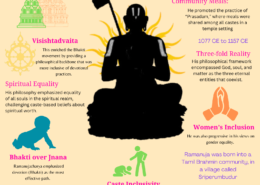Give a definition and an explanation of the main features of volcanic hotspots.
Northward movement of the Indian subcontinent towards the Eurasian plate eventually caused a massive collision and the creation of the Himalayan range. This cataclysmic event was orchestrated by the following geodynamic processes:This cataclysmic event was orchestrated by the following geodynamic prRead more
Northward movement of the Indian subcontinent towards the Eurasian plate eventually caused a massive collision and the creation of the Himalayan range. This cataclysmic event was orchestrated by the following geodynamic processes:This cataclysmic event was orchestrated by the following geodynamic processes:
1. Continental convergence: The shear movement observed in the Indian plate toward the Eurasian plate meant there was going to be a compression zone.
2. Crustal thickening: When the plates came into contact, the crust rises and becomes thicker creating an extensive orogenic belt.
3. Faulting and folding: To worsen the effects of the forces that caused uplift, there was faults which led to folds that shaped the Himalayan range.
4. Uplift and metamorphism: This underthrusting made the rocks in the region to uplift and metamorphose quickly due to movements on the Indian plate which subducts beneath the Eurasian plate.
5. Denudation and erosion: Weathering and erosion contributed to the rock break down thus revealing the towering giants of the himalayas.
This titanic story has been playing out on a scale of tens of millions of year constructing one of the most grandiose mountain chains possible on this planet. Himalayas is one of the best examples of the geodynamic forces that are still active and creating miracles on this earth.
See less



Volcanic hotspots are permanent and localized regions of intense volcanic activity on Earth's surface, typically found in the interior of tectonic plates, far from convergent and divergent plate boundaries, where magma rises from the mantle to create volcanoes and geothermal features. Around 40 to 5Read more
Volcanic hotspots are permanent and localized regions of intense volcanic activity on Earth’s surface, typically found in the interior of tectonic plates, far from convergent and divergent plate boundaries, where magma rises from the mantle to create volcanoes and geothermal features. Around 40 to 50 volcanic hotspots are known to exist around the world. Some examples include the Iceland hotspot, the Afar hotspot, and the Louisville hotspot.
Key Characteristics of Volcanic Hotspots:
Volcanic hotspots are enigmatic geological phenomena that offer invaluable insights into Earth’s geological evolution, and deep interior processes. By unraveling the intricacies of these hotspots, we can enhance our comprehension of our dynamic planet, with far-reaching implications for both scientific understanding and environmental stewardship.
See less